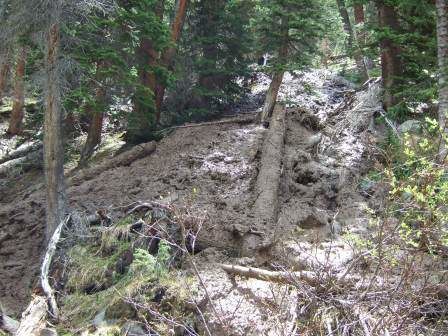
A landslide crashed into Straight Creek on U.S. Forest Service land last week, threatening Dillon and Dillon Valley's primary water supply.
But the town and the valley will be able to pull clean drinking water from the high Lasky Gulch for at least a few months while waiting for the sediment from the slide to clear.
"The immediate concern was the question: Was it a large enough slide to where it could deposit enough material to create a blockage on Straight Creek?" Dillon town manager Devin Granbery said. "There would be a potential for the build up of water behind a blockage and then a release. and there was a potential for damage to property and life safety issues there."
A release of water from a behind a landslide dam could also damage the Dillon and Dillon Valley diversion plants downstream, which pull water from the creek to be filtered for drinking water.
Fortunately, the slide did not create a blockage, according to Forest Service hydrology experts.
The town will pull drinking water primarily from Lasky Gulch because the sediment still in the creek from the slide can be damaging to the diversion plants.
The town has also left an excavator off Interstate 70 near the site of the slide, which will be able to remove a blockage quickly if the slide moves farther into the creek.
"We feel pretty confident at this point that there's no immediate threat to life or property," Granbery said.
But the towns of Silverthorne and Dillon both have to confront the long-term impacts of the heavy sediment spilled into the water, which, once the creek feeds into the Blue River, could eventually threaten Silverthorne's fisheries.
It is unclear what caused the slide. Granbery said it might have been the rain and moisture in recent weeks, erosion from the beetle kill, a slackening of the soil as the ground thawed or a combination of factors.
Dillon is working with the county, Silverthorne, the Colorado Department of Transportation and the Forest Service as well as local utility companies to ensure power lines and other infrastructure in the area aren't damaged and to begin to find ways to deal with the long-term problems posed by the sediment.
"We have to be working with all those agencies involved to see what are the long-term impacts of the landslide," Granbery said. "We may be piping sedimentation ponds to help us with long-term treatment of water. Eventually it will revegetate itself. It's a normal occurrence, but for a few years we'll be dealing with some sedimentation issues."



Reader Comments
to our Newsletter